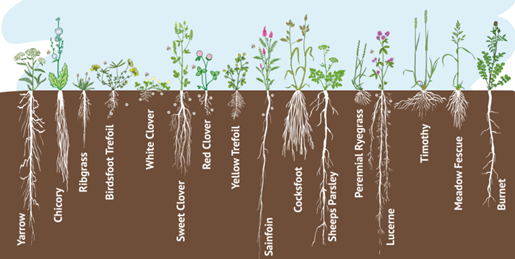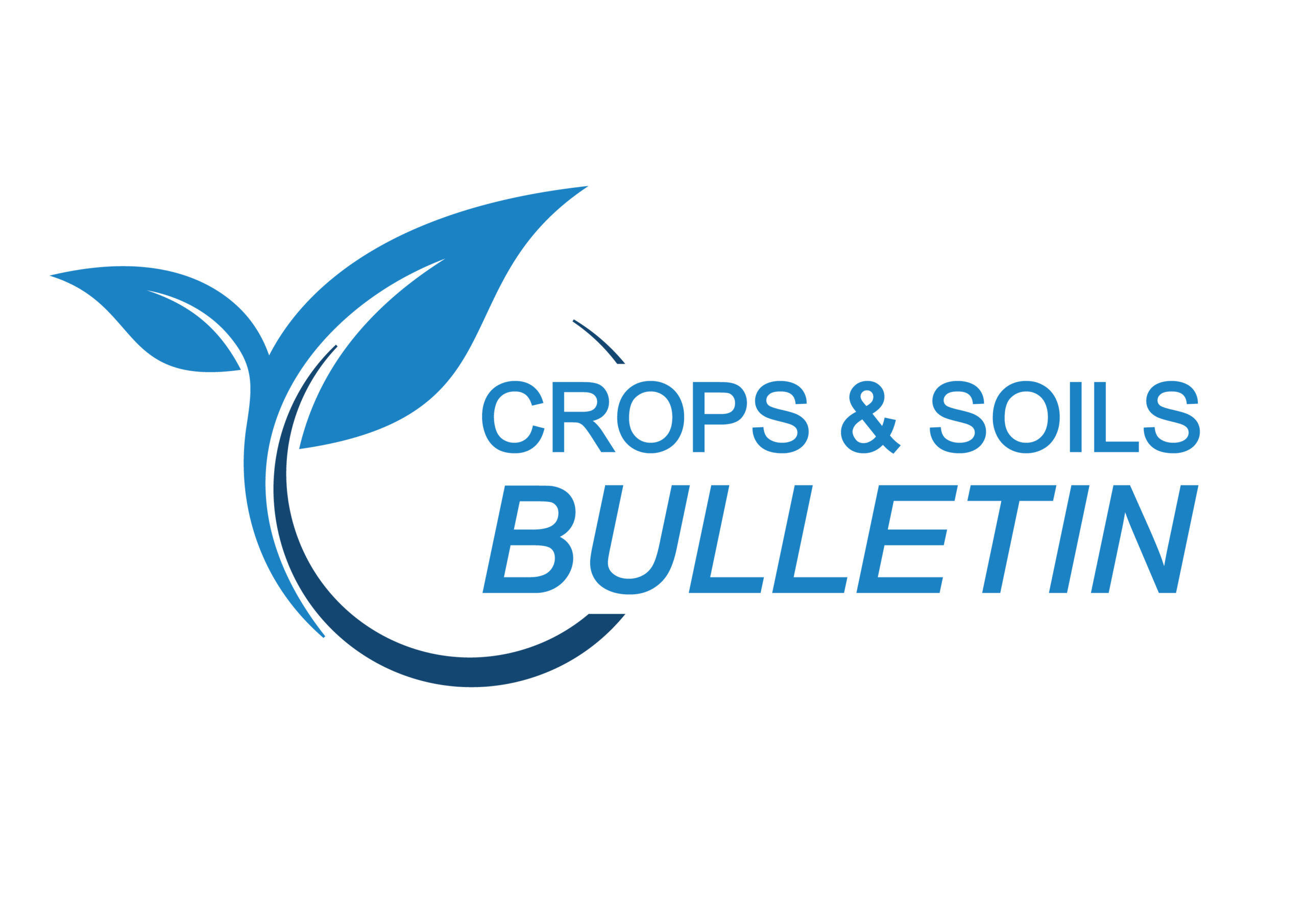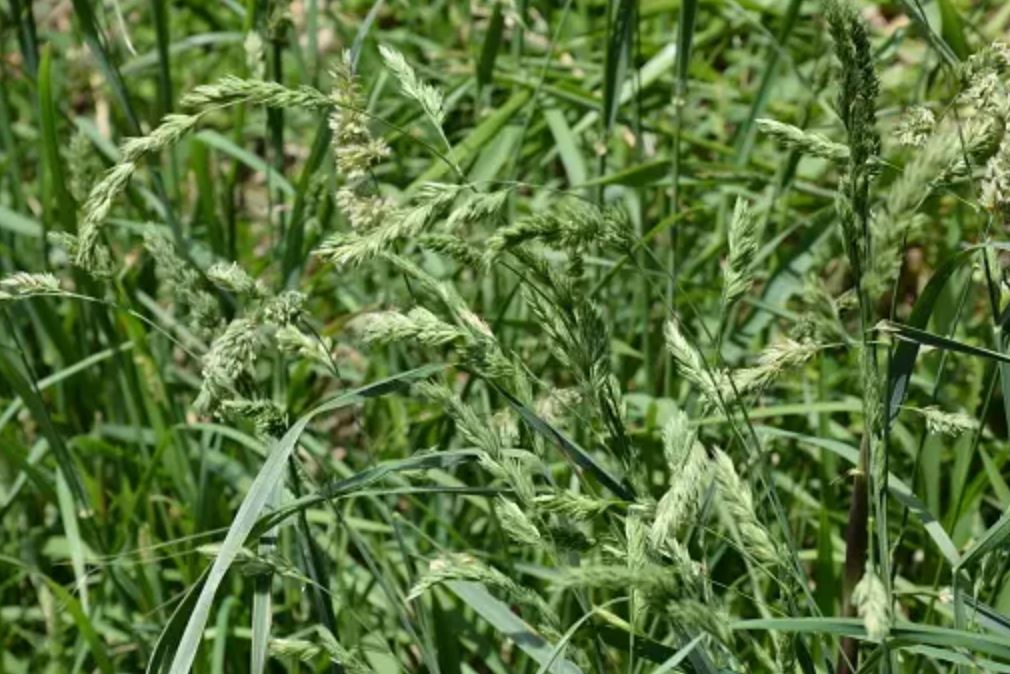Should We Reconsider Cocksfoot?
23 August 2023Cocksfoot (Dactylis glomerata), whilst often included at low rates in grazing mixes, is often shunned due to perceived low feed quality, with difficulties in maintaining quality due to its growth habit into tussocks (>1m) with densely tufted flowering heads if not managed well.
One of its strengths, however, as shown in infographic below is its comprehensive and deep root structure which makes it more drought tolerant than shallow rooting species such as ryegrass. Meaning it has a superior ability to grow during dry spells. Grass seed merchants are now producing ‘drought resistant’ mixes in which cocksfoot features heavily.
Rooting depth of different pasture species

What’s more, it has good early growth characteristics providing valuable spring feed and strong overall annual yield. Modern varieties have also been bred for improved feed quality with softer leaves, as well as higher yields. It is also a very persistent perennial making it suitable for long term mixes.
So, with many regions experiencing more prolonged summer dry spells, with feed demand supply issues, and a greater emphasis on outdoor lambing and a drive to reduce supplementary concentrate feeding, should more farms be considering cocksfoot in their grazing mixes?
If doing so, however, it is essential that effective grazing management is employed to maintain it in a leafy state, see grazing target heights below. When leaves are young and kept in a leafy state its palatability to stock is good and its D-value is in fact similar to ryegrass in this state.
Lax management, however, can quickly lead to clump formation and heading with feed quality deteriorating rapidly. This is even more important in sheep only systems as once rank, sheep will outright reject the plant choosing to over grazing other plants making it difficult to reset quality without mechanical intervention eg. topping. Cattle are more willing to eat it, but performance will be reduced. Good grazing management is ultimately required to reap the multitude of benefits cocksfoot can bring to livestock grazing systems, particularly those prone to drought.
Grazing height targets
| Rotational Grazing | Set Stocked | |
|---|---|---|
| Entry Height (cm) | Residual (cm) | Continuous (cm) |
| 8-10 | 4 - 5 | 4 - 6 |
Daniel Stout, Sheep and Grassland Specialist, SAC Consulting
Sign up to the FAS newsletter
Receive updates on news, events and publications from Scotland’s Farm Advisory Service


